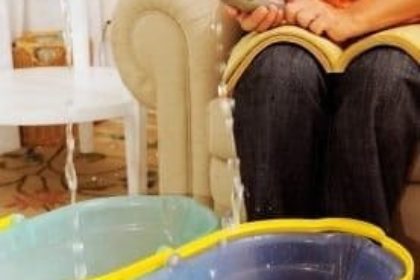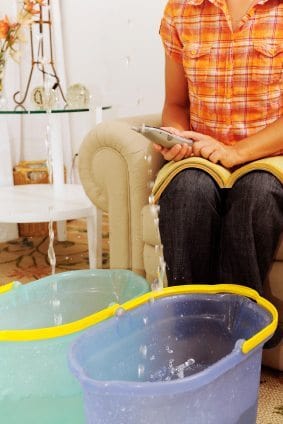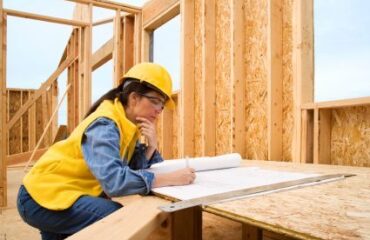
Tips for a Healthy Home – Keep It Dry
Keep Water Out
Excess moisture is at the center of many problems relating to durability and indoor air quality. If we build structures that won’t rot or support mold growth, we will both increase the longevity of those buildings and reduce the health risks of living in them. Given below is a checklist for moisture control – a key category in tips for a healthy home:
- Provide proper flashing on all windows and doors: All components should be layered so that water is shed down and outward.
- Provide a rain screen behind siding: To facilitate drying of siding and to provide a capillary break between the siding and the sheathing, provide rain screen detailing. This can be done with vertical wood strapping (minimum 3⁄8”); or a specialized rain screen product.
- Seal wood and fiber-cement siding: Porous siding materials should be sealed on all sides to prevent moisture absorption. Pre-priming is recommended prior to installation, with multiple coats as needed, especially on end-grain.
- Provide a capillary break above footing: Paint the top of the footing with a damp-proofing coating or install an impermeable layer before installing the foundation wall to block the upward migration of soil moisture.
- Provide drainage layer and poly vapor retarder under concrete slab: Before pouring a concrete floor slab, install a minimum 4” layer of crushed stone and a poly vapor retarder. The concrete should be poured right on top of the poly; without a layer of sand between the poly and slab.
- Provide perimeter drainage at footing: Install crushed stone (no fines) and perforated drain pipe around the footing. The drainage pipe should be slightly pitched but extend neither below the bottom of the footing nor above the top of the footing. Sections of plastic pipe should extend through the footing every 6’ to 12’ to drain the space under the slab. Wrap the layer of crushed stone with geotextile filter fabric to keep fines out.
- Paint outside of foundation wall with damp-proofing layer: A durable damp-proofing should be painted on the outside of the foundation wall. Several layers are suggested.
- Install free-draining layer next to foundation wall: Install a specialized drainage layer (free-draining insulation, kinked nylon mesh, corrugated plastic, etc.) against the foundation wall, or backfill against the wall with crushed stone, or do both. When using a layer of crushed stone, protect it with a geotextile filter fabric to keep fines out.
- Slope ground away from building and provide impermeable cap: The ground should slope away from a building at a minimum pitch of 5% (6” per 10’). Provide a low-permeability (high-clay-content) soil cap extending 6’ from the building to reduce infiltration and direct surface runoff away from the structure.
- Provide a roof overhang to keep rainwater away from building: The longer the roof overhang, the greater the protection of the house. A minimum 24” overhang is recommended in most climates; 36” is preferable.
- Provide self-sealing ice and water barrier on roof: Install a self-sealing protective layer (e.g., Grace Ice & Water Shield) under roofing.
- Install gutters and downspouts: Install durable gutters and downspouts to direct rainwater away from the building. At the bottom of downspouts, water should be channeled as far from the building as possible. Do not connect downspouts to footing drains.
- Finally inside the home, use a timer or humidistat to operate bathroom fans so as to ensure adequate run-time.



